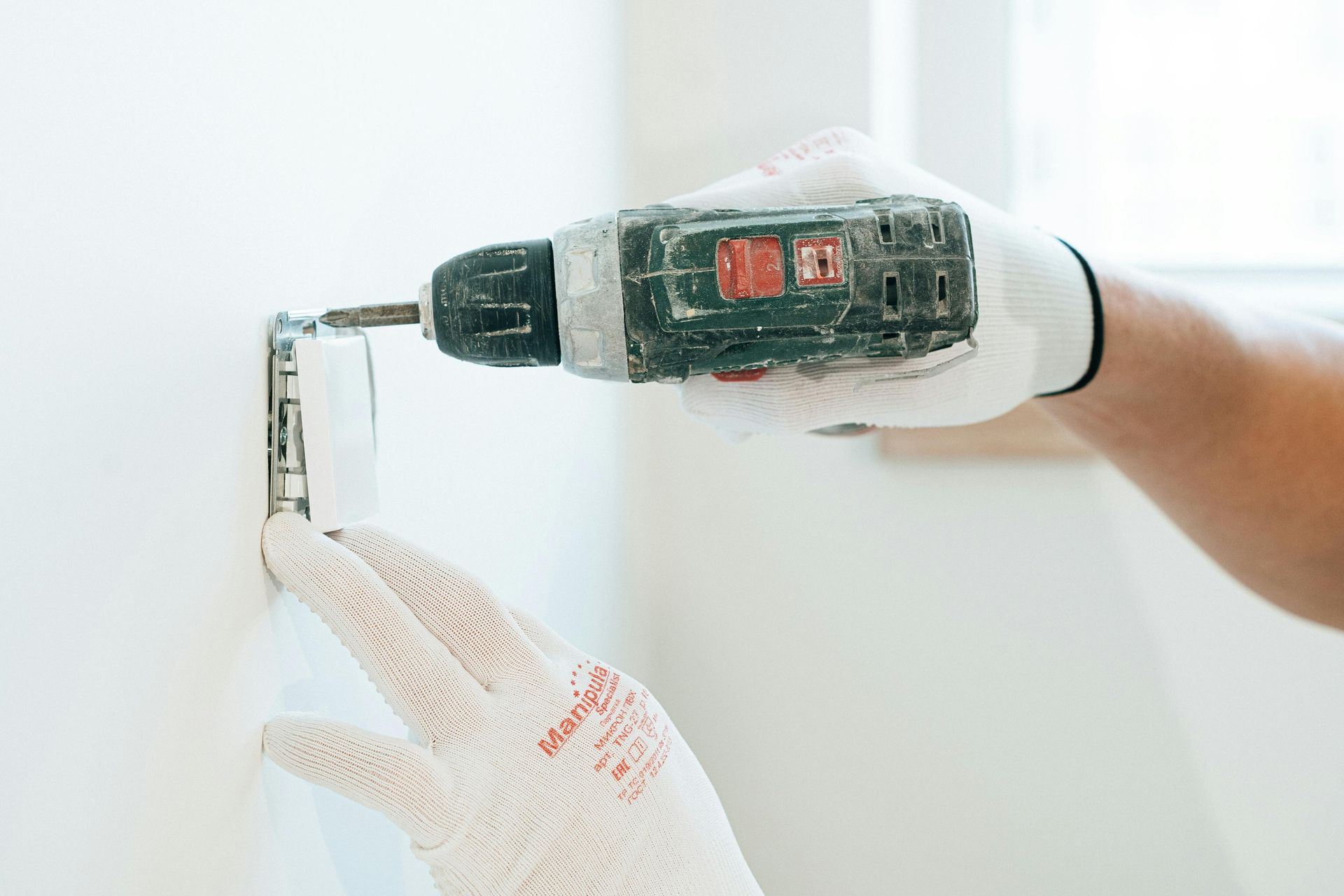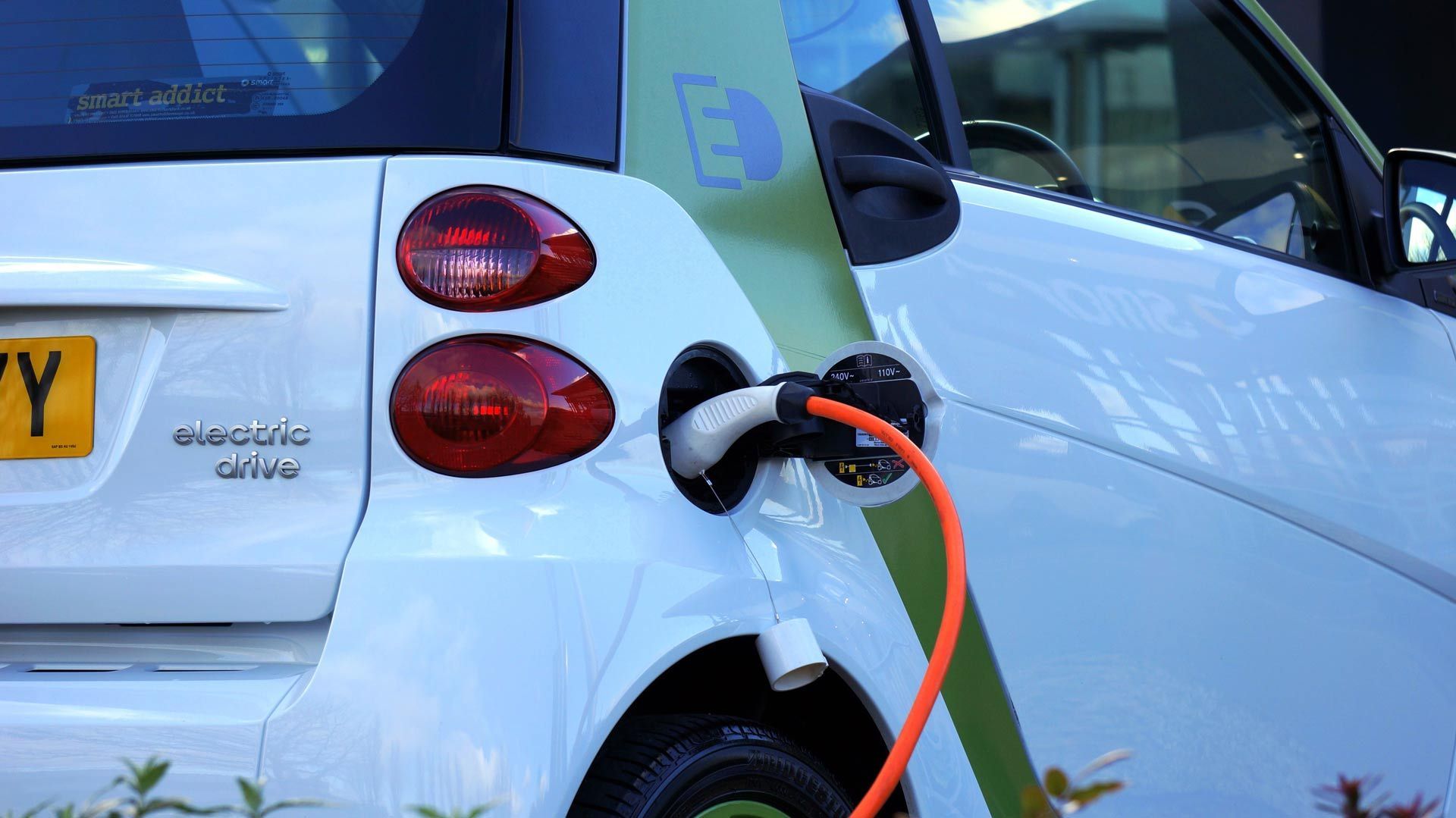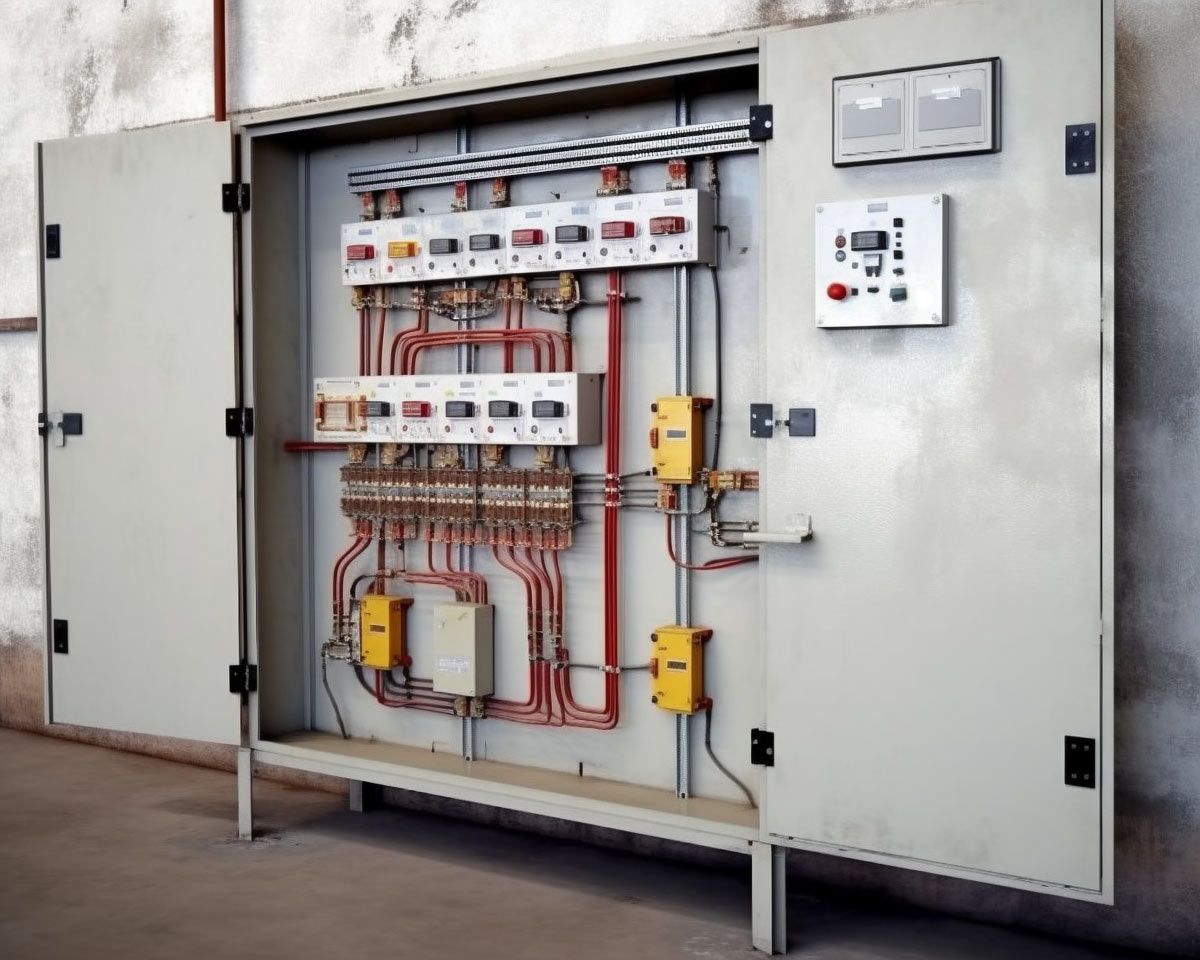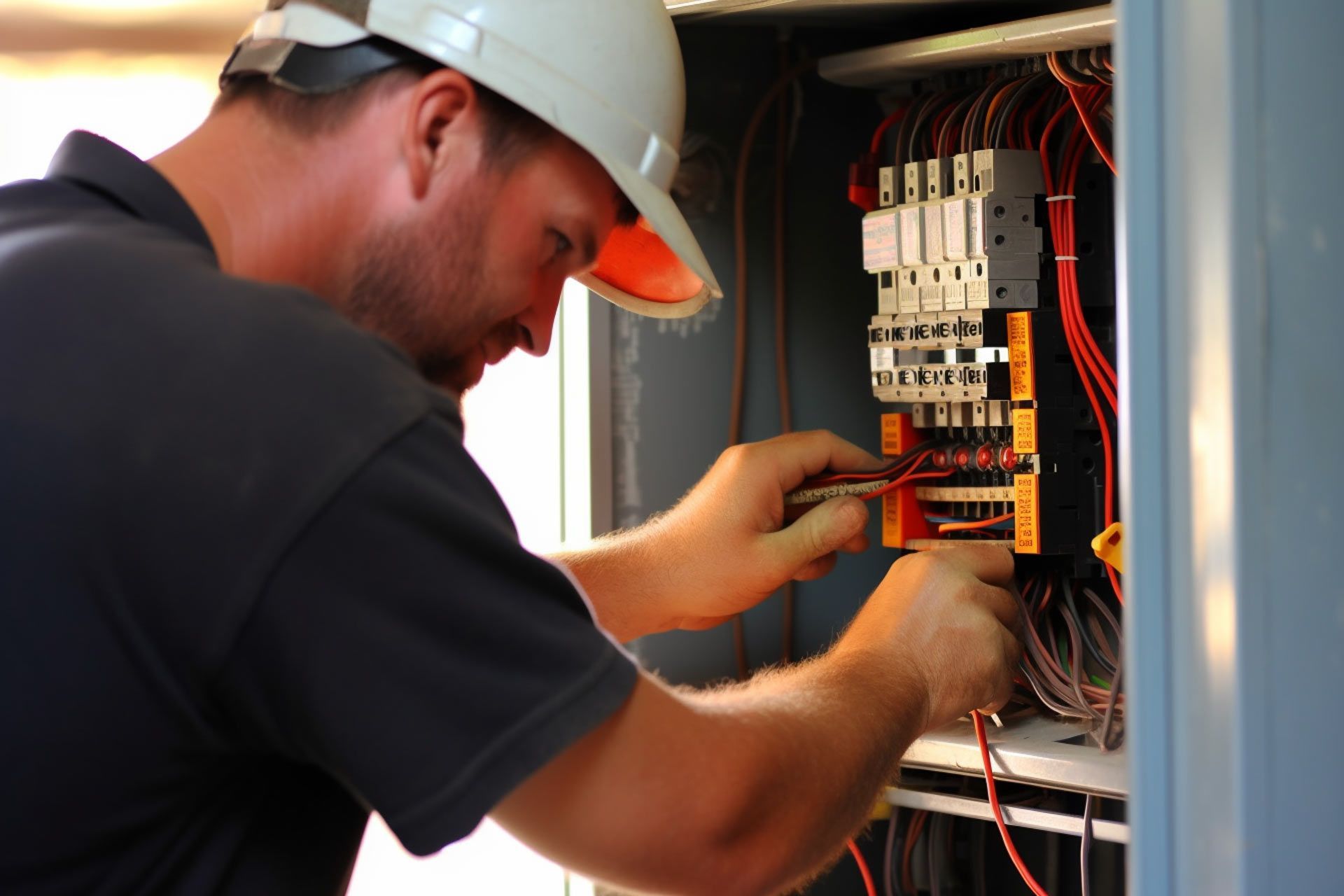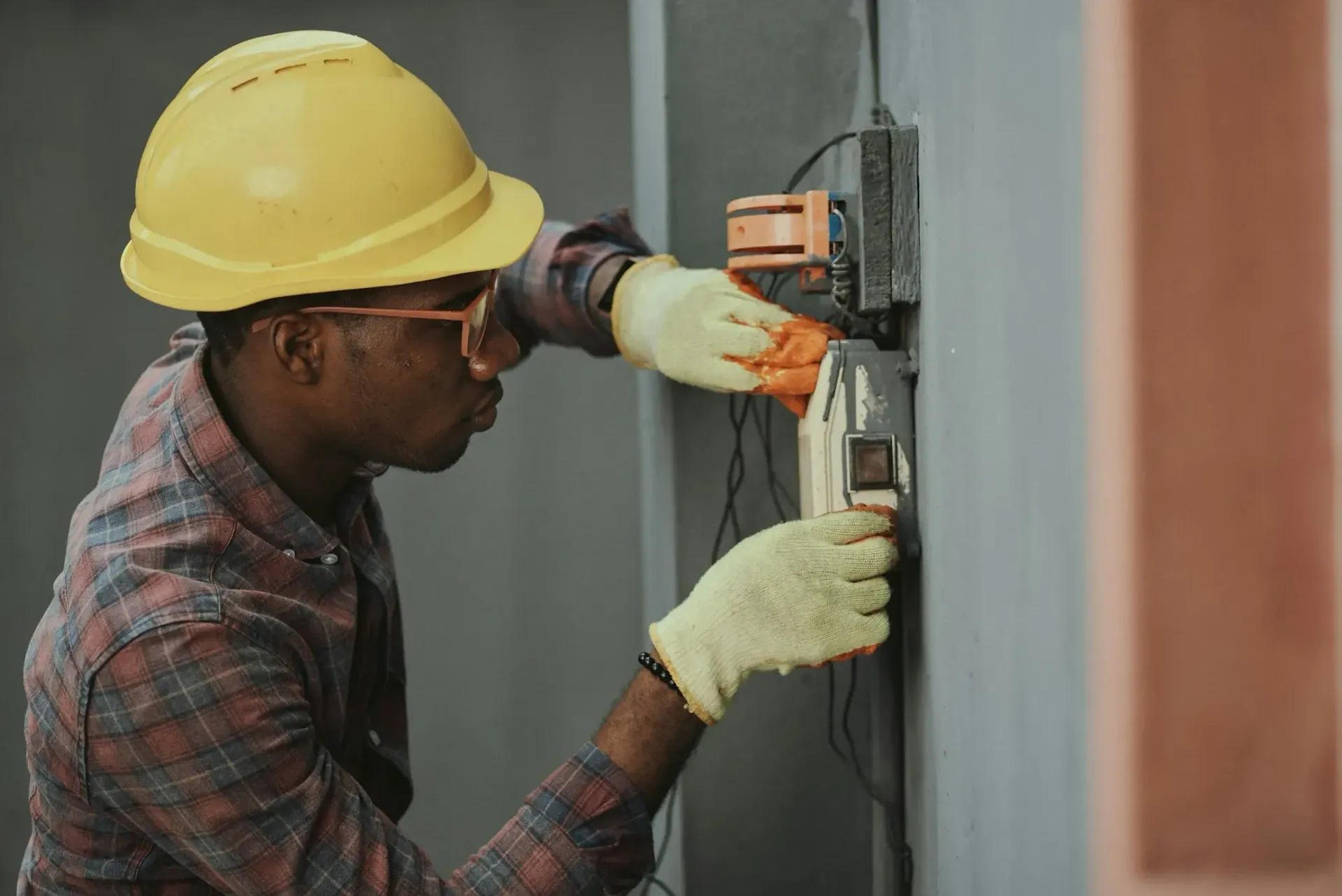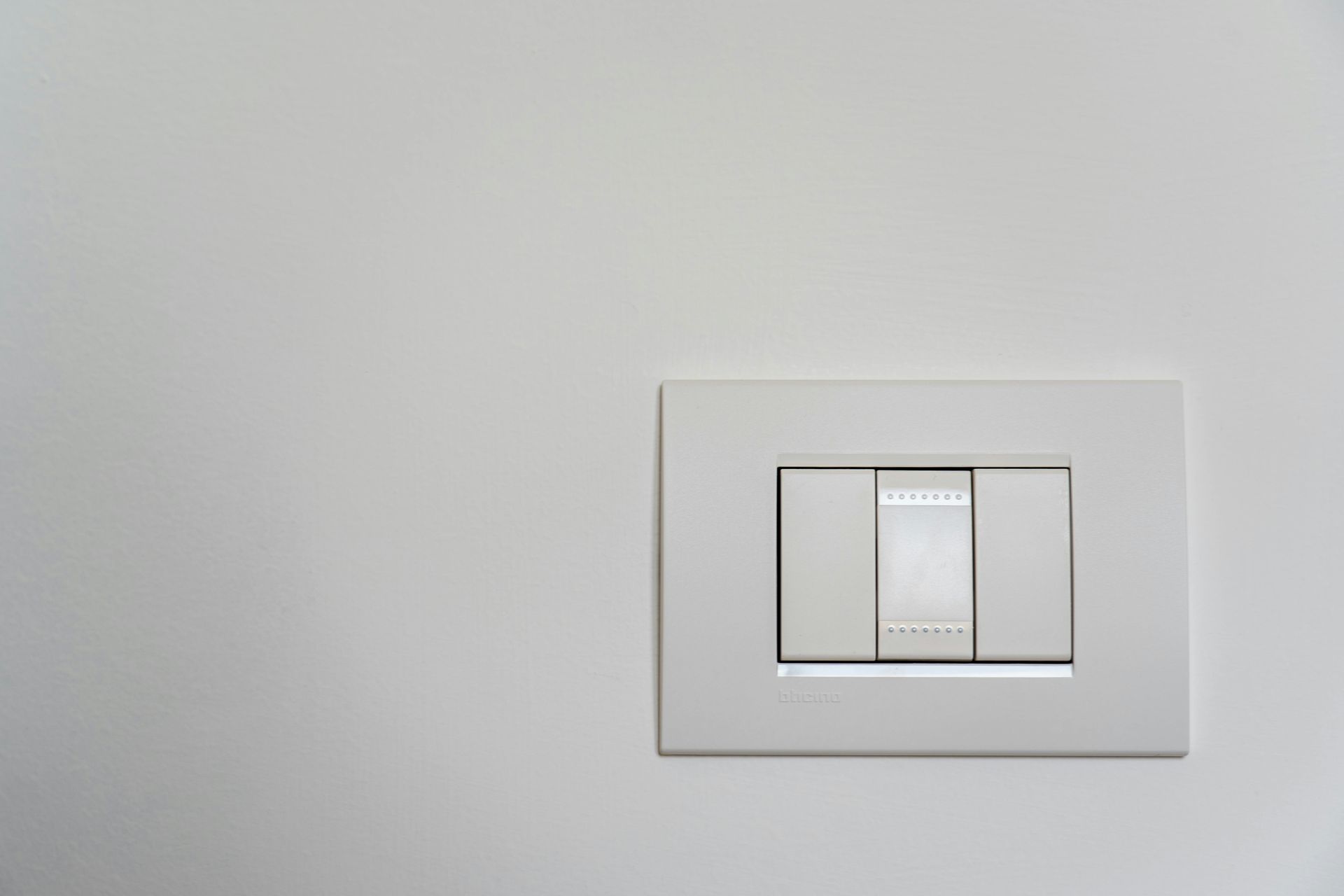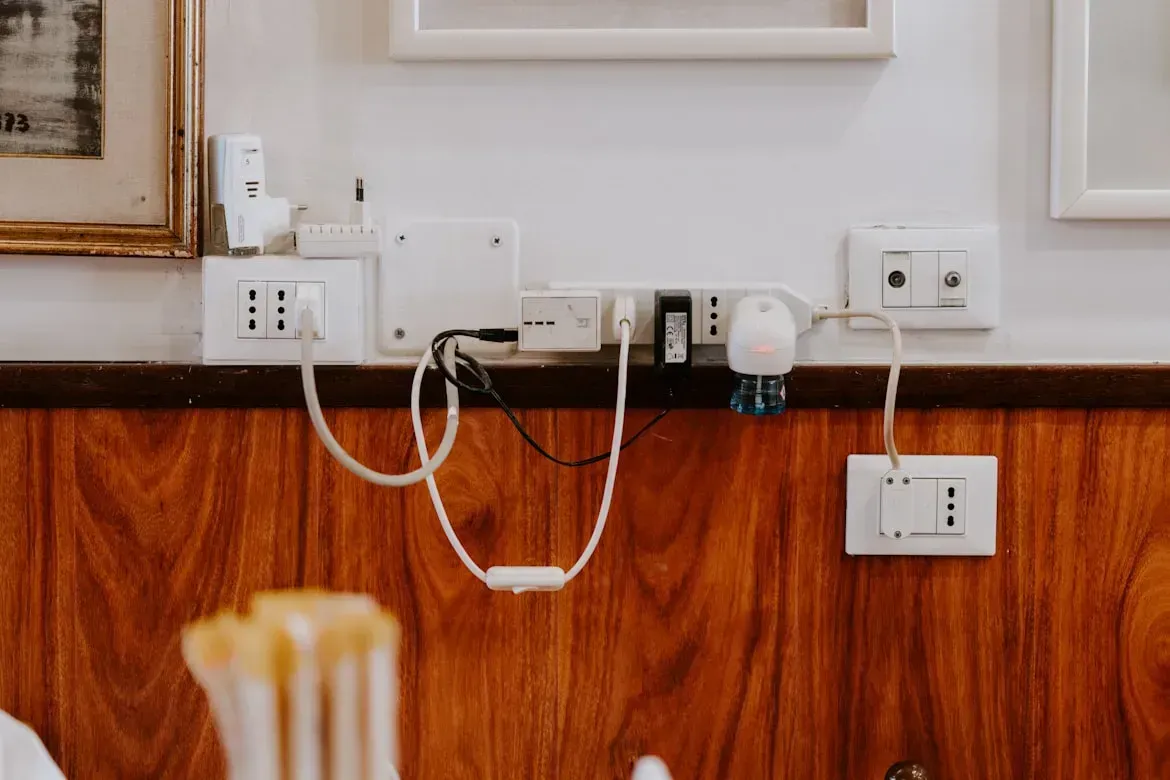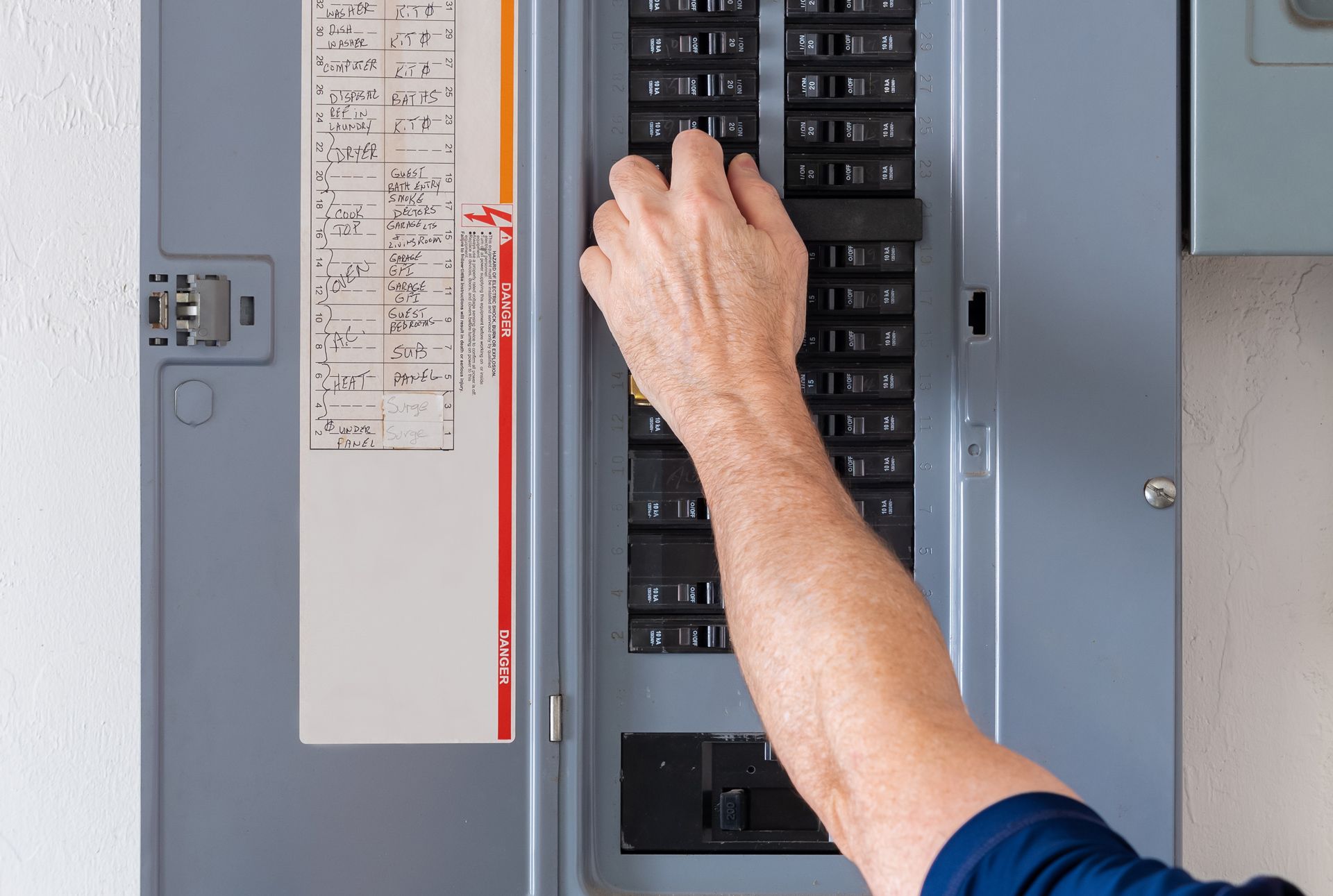Top 10 Electrical Hazards Lurking in Your Home!
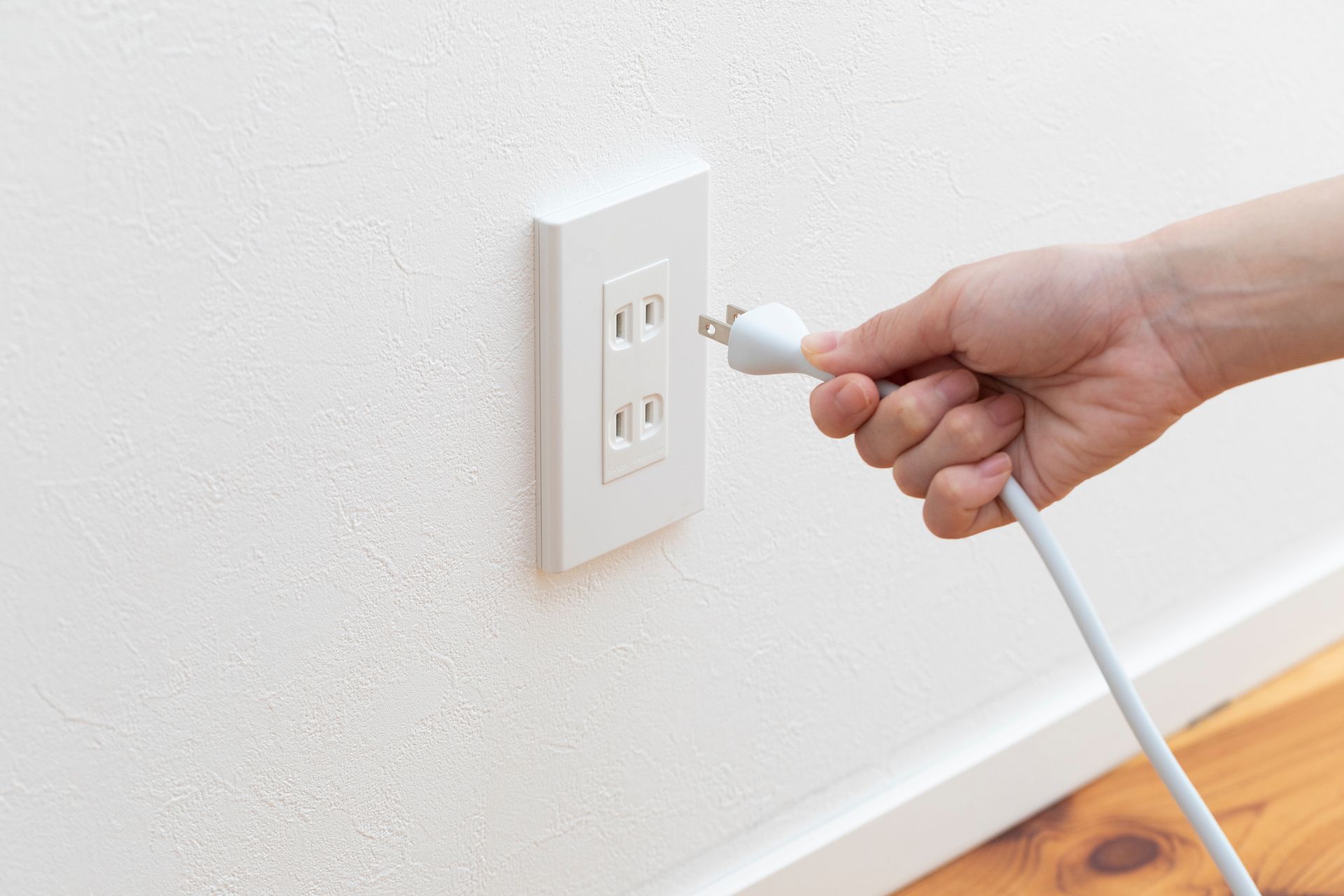
Welcome to our deep dive into the often-overlooked world of home electrical safety. Our homes, buzzing with technology and appliances, are dependent on electricity. However, beneath this convenience lies a network of potential hazards. This guide is your roadmap to identifying and addressing the top 10 electrical dangers lurking in your home. We'll walk you through each hazard, equipping you with the knowledge and strategies to keep your home safe and sound. So, let's start this enlightening journey and turn your home into a safer haven.
Overloaded Outlets and Power Strips
Picture this: a single wall outlet at home, bristling with a tangle of plugs from your various devices. It's a common sight, but did you know it's also a major electrical hazard? Outlets are designed to handle a specific electrical load, and overloading them is like playing with fire – literally.
Here’s the deal: each outlet in your house is built to deliver a set amount of power. Overloading them, especially with power strips crammed with multiple appliances, ramps up the risk of overheating and potentially causing a fire.
This isn’t fear-mongering; it’s a fact supported by experts at SecurityNerd and SafeWise. The solution isn’t as complex as you might think. It starts with understanding the capacity of your outlets.
Consult a residential electrician to get the lowdown on how much load each outlet can handle. They can provide insights into the electrical demands of your appliances and help you distribute them safely across different outlets.
Also, don't fall into the power strip trap. They're convenient, sure, but they're not a long-term solution for insufficient outlets. They're a stop-gap at best. And doubling up on power strips?
That’s a big no-no. It’s not just about the number of outlets available; it’s about the total electrical load you’re placing on a single circuit.
Here’s What You Can Do
- Use power strips sparingly and never daisy-chain them.
- Understand the capacity of your outlets and arrange your appliances accordingly.
- Consider getting additional outlets professionally installed if you find yourself consistently running out of socket space.
In summary, overloaded outlets are a ticking time bomb in the realm of home electrical safety. By understanding and respecting the limits of your home's electrical system, and seeking professional guidance, you can prevent these accidents waiting to happen.
Damaged or Outdated Wiring
Now, let's turn our attention to a hidden yet significant threat in many homes: outdated or damaged wiring. Often concealed behind walls, the state of electrical wiring is usually out of sight and out of mind. However, neglecting it can lead to dire consequences.
Old or damaged wiring is like an unseen serpent in the walls of your home, slithering unnoticed but poised to strike. Over time, wiring can degrade, especially in homes over 30 years old. According to Mr. Electric, wiring, particularly copper wiring, has a finite lifespan and should be replaced periodically. The dangers of ignoring this are severe - from electrical shocks to devastating fires.
The symptoms of wiring issues can be subtle yet telling. Flickering lights, outlets that feel warm to the touch, or a persistent burning smell are red flags, as noted by SafeWise. These signs are your home’s SOS - a call for immediate attention.
Here’s What You Can Do
- Schedule regular electrical inspections, especially if your home is older. A licensed electrician can assess the state of your wiring and recommend necessary repairs or upgrades.
- Pay attention to warning signs. If you observe any unusual electrical behaviors, don’t hesitate to call in a professional.
- If you live in an older home, consider a comprehensive wiring upgrade. It's not just a safety measure; it's an investment in your home's future.
In summary, outdated or damaged wiring is a ticking time bomb in your home’s electrical system. Regular checks and professional maintenance are key to defusing this hazard and keeping your home safe.
Water Hazards Near Electrical Sources
Water and electricity are a lethal combination, and their intersection in a home environment is a recipe for disaster. The dangers are not just theoretical; they are real and can lead to severe injuries or even fatalities.
Imagine this: a hair dryer or a toaster near a filled bathtub or a sink – it's a common enough scenario, but one that's fraught with risk. Water conducts electricity extremely well, and any contact between electrical appliances and water can lead to electric shock or worse. This risk is particularly high in bathrooms, kitchens, and other areas where water is commonly used.
What You Need to Know to Stay Safe
- GFCI Outlets are Lifesavers: Ground Fault Circuit Interrupter (GFCI) outlets are specifically designed to prevent electric shock by cutting off power if they detect an imbalance in the electrical current. SecurityNerd and SafeWise recommend installing GFCI outlets in any areas where water and electricity might meet. This includes bathrooms, kitchens, and even outdoor spaces.
- Vigilance Around Water: Always be mindful of the placement of electrical appliances near water sources. Keep them as far away as possible to avoid accidental contact with water.
- Responding to Water Hazards: If an appliance does get wet, don’t attempt to unplug it right away. First, turn off the power source at the electrical panel to mitigate the risk of shock, then safely unplug and dry the appliance.
Water hazards are particularly insidious because they often result from everyday activities. By implementing these safety measures and maintaining a constant awareness of the risks, you can significantly reduce the danger of electrical accidents in wet areas of your home.
Misuse of Extension Cords: A Common Overlooked Hazard
Extension cords are incredibly useful, but they can also be dangerous if not used correctly. They are meant for temporary use, yet many of us use them as a permanent solution for our electrical needs. This misuse can lead to serious hazards, including the risk of fire.
Let's break it down
- Avoid Daisy-Chaining
One of the most common mistakes is connecting multiple extension cords together or plugging several high-voltage appliances into one extension cord. This practice, known as daisy-chaining, can overload the cord and create a significant fire risk. - Temporary, Not Permanent
Extension cords are designed for temporary use. Using them as a long-term solution for lack of outlets can put undue strain on the cord and the electrical system. If you find yourself relying on extension cords regularly, it’s a sign you need more outlets. Consider having a residential electrician install additional outlets. - Regular Inspection
Before using an extension cord, inspect it for any damage, such as fraying or exposed wires. Damaged cords can be a fire hazard and should never be used. SecurityNerd emphasizes the importance of inspecting cords before use.
The bottom line is that extension cords are helpful but should be used wisely and sparingly. Understanding their proper use and limitations is key to maintaining a safe home environment. Remember, the best solution for a shortage of outlets is not a longer extension cord, but more outlets, professionally installed.
Improper Use of Electrical Appliances
Electrical appliances make our lives easier, but when used improperly, they can pose serious risks. This section focuses on common missteps in appliance usage and how to avoid them.
- Proximity to Water Sources: The most critical rule is to keep electrical appliances away from water. HomeAlliance warns about the dangers of using appliances near water sources. This includes not only obvious places like bathrooms and kitchens but also any area where water might be present. Even a small amount of water can cause a short circuit or electrocution.
- Handling Wet Appliances: If an appliance does get wet, the instinct might be to unplug it immediately. However, this can be dangerous. The safer approach, as advised by SafeWise, is to first turn off the power source at the electrical panel. Once the power is cut off, it's safe to unplug and address the wet appliance.
- Regular Maintenance: Appliances require regular maintenance to function safely. This includes simple tasks like cleaning lint filters in dryers or checking cords for wear and tear. Neglected maintenance can lead to appliances malfunctioning, which can cause fires or electrical shocks.
- Correct Usage According to Manufacturer’s Instructions: Every appliance comes with a manual for a reason. It's essential to use appliances only as intended by the manufacturer. Misusing an appliance can lead to dangerous situations. For instance, using a space heater too close to flammable materials or overloading a washing machine can create fire risks.
In summary, the proper use and maintenance of electrical appliances are key to preventing accidents in your home. Paying attention to how and where you use these devices, along with regular upkeep, can significantly reduce the risk of electrical hazards.
Inadequate or Faulty Equipment Protection
When it comes to electrical safety, the protection of our equipment is often an overlooked aspect. Yet, inadequate or faulty protection of electrical devices and systems can lead to significant hazards, including electrical fires and equipment damage.
- Surge Protection: Electrical surges can happen unexpectedly and can damage sensitive electronics. Schneider Electric Blog emphasizes the importance of Surge Protection Devices (SPDs). These devices protect your appliances from voltage spikes that can occur during storms or due to other electrical disturbances. Without proper surge protection, your electronic devices are at risk of being damaged beyond repair.
- Protection against Overloading: It's not just external surges that pose a risk. Overloading your own electrical system can also cause problems. Drawing more current than an outlet or appliance can handle can lead to overheating and fires. This includes plugging high-wattage devices into outlets not designed for such loads. Schneider Electric’s range of MCBs (Miniature Circuit Breakers) is designed to protect against such overloading, by automatically cutting off power in case of an overload or short circuit.
- Regular Checks for Faulty Equipment: Regular checks of your electrical equipment can prevent potential hazards. Look for signs of wear and tear, such as frayed wires or loose connections. If you find any damaged equipment, it’s crucial to have it repaired or replaced immediately. Remember, faulty equipment is not just an inconvenience; it can be a serious safety risk.
In summary, protecting your electrical equipment is a critical component of home safety. Using surge protectors, ensuring your appliances and outlets are not overloaded, and regular maintenance checks are key steps in safeguarding your home from electrical hazards.
Electrical Safety in Modern Home Design
The landscape of residential electrical systems is evolving rapidly, with new technologies and design trends reshaping how we think about home electrical safety. Understanding these changes is crucial for maintaining a safe and efficient home environment.
- Shift to USB and Smart Home Systems: The way we charge and power our devices is changing. More homes now integrate USB outlets and smart home systems, as highlighted by McCall Enterprises. This shift requires a different approach to wiring and electrical setups. It's not just about traditional electrical outlets anymore; it's about accommodating a variety of charging methods and smart devices. These systems need to be designed and installed correctly to ensure safety and efficiency.
- Green Energy Integration: Another significant trend is the move towards green energy solutions, like solar panels. These systems come with their own set of electrical considerations. As McCall Enterprises points out, having an experienced electrician to ensure the correct setup and connectivity is crucial for optimal performance and safety. This is especially important as homes move towards using electrical energy for heating and hot water, which presents new challenges in terms of electrical load and safety.
- Advanced Lighting Solutions: LED lighting is becoming more common due to its energy efficiency and compatibility with smart home systems. However, as these lighting solutions become more complex, the need for proper installation and maintenance increases. Incorrect installation or maintenance of LED lighting systems can lead to electrical hazards.
- Smart Appliance Integration: As homes become smarter, the integration of various appliances into a central system becomes more prevalent. This requires a well-thought-out electrical plan to ensure that all components work together safely and efficiently. Incorrect installation or overload of smart systems can lead to electrical failures or hazards.
In summary, the modern home is becoming more electrically complex, with USB charging, smart systems, green energy, and advanced lighting becoming the norm. Adapting to these changes while ensuring electrical safety is paramount. It’s essential to work with knowledgeable electricians who are familiar with these modern systems and can provide the necessary expertise.
Hiring a Professional for Electrical Repairs and Inspections
When it comes to electrical repairs and inspections, the expertise and experience of a professional electrician are invaluable. Electrical work is not a DIY task; it requires a deep understanding of systems and safety protocols. Here’s why and how to engage the right professional:
- Certification and Experience: Look for a certified electrician. Certification is a guarantee that they have undergone the necessary training and assessments. Experience is equally important. An electrician with a long track record is more likely to provide high-quality work. PaylessPower and Schneider Electric Blog emphasize the importance of hiring qualified professionals for electrical work.
- Understanding the Scope of Work: Whether it’s a minor repair, a major rewiring project, or a routine inspection, a professional electrician can assess and address your needs effectively. They can spot potential hazards and provide solutions, ensuring your electrical system is safe and up to code.
- Safety and Compliance: Professional electricians are well-versed in local building codes and safety standards. They ensure that all electrical work complies with these regulations, which is crucial for your safety and may also be important for insurance purposes.
- Up-to-Date with Latest Trends: With the evolving nature of electrical systems and technologies, professional electricians keep themselves updated. This is particularly important when dealing with modern installations like smart home systems or green energy solutions, as noted in McCall Enterprises' discussion on residential electrical trends.
- Preventative Approach: Regular inspections by a professional can help identify and rectify potential problems before they escalate. This preventative approach can save you from costly repairs and dangerous situations in the long run.
In summary, hiring a professional electrician is not just about fixing a problem; it’s about ensuring the overall safety and efficiency of your home’s electrical system. The right professional brings expertise, safety, compliance, and peace of mind.
Conclusion: Empowering Your Home with Electrical Safety
As we wrap up our comprehensive guide on electrical hazards in the home, remember that awareness and proactive measures are key to maintaining a safe and secure environment. From understanding the risks of overloaded outlets to the importance of hiring a professional for electrical inspections, every step you take contributes to a safer home.
Your Next Step: Choosing the Right Expertise
When it comes to electrical safety, having a reliable and experienced electrician is crucial. For those residing in Lehi, UT, and surrounding areas like American Fork, Pleasant Grove, Sandy, Draper, St George, Hurricane, Cedar City, and Washington, Bar H Bar Electric stands out as a top choice. Known for their expertise and professionalism, they are the go-to residential electricians near you.
Whether you need a routine inspection, a complex repair, or advice on modern electrical installations, their team of skilled electricians is ready to assist. Don’t let electrical hazards put your home at risk. Reach out to Bar H Bar Electric, the trusted electrician near you, and take the first step towards a safer and well-maintained electrical system in your home.
Phone
Utah County: (480) 686-2115
St George: (480) 686-5978
Hour of Service
- Mon - Fri
- -
- Sat - Sun
- Closed
